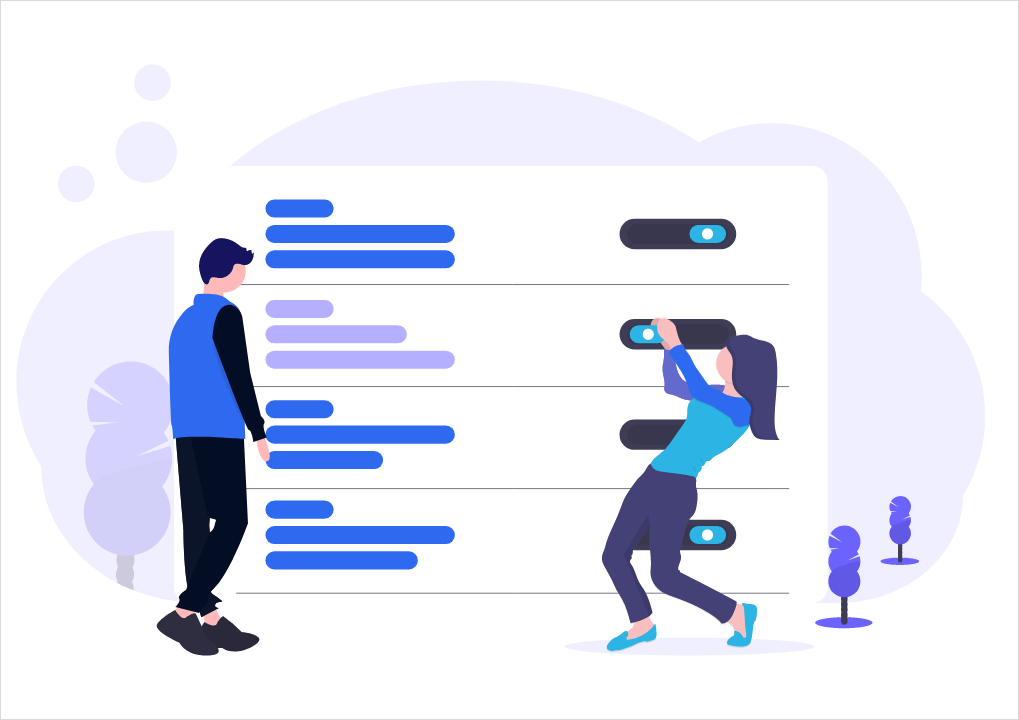A few days ago, my colleague Morgan and I had an interesting conversation about Google Ads’ personalization settings page. I started to wonder when you change these settings, do you truly have an influence over which kinds of Google Display Ads appear on your websites?
In this conversation, Morgan told me a fun fact about the U.S. traffic lights placebo effects.
I’m pretty sure you are familiar with the feeling when you’re in a hurry, standing by the side of the road and waiting for the traffic light to change from red to green. You keep pushing the big button to speed up the process, and when you finally see the magnificent green light, you’re glad because you did it!
But did you know that those buttons don’t do anything? I’m sorry if I destroyed your whole world. The truth is, it gives you a fake feeling of control over something as important as traffic lights.
Now I’m sure you’re wondering how this story related to Google Ads’ personalization settings? Let me explain!
After my conversation with Morgan, I started to dive deeper to find out Google Ad settings are working well in case you want better-targeted ads? Or is it just to give you a placebo effect like the traffic light change button?
First, let’s see Google’s reasons for why you may see a Google Display Ad:
- Info in your Google Account, like your age range and gender
- Your general location
- Your current search query
- Previous search activity
- Your activity while you were signed in to Google
- Your previous interactions with ads
- Types of websites you visit
- Types of mobile app activity on your device
- Your activity on another device
- The time of day
- Information you gave to an advertiser, such as signing up for a newsletter
Okay, this is interesting, but what if I want to tell them which kinds of ads I want to see?
When I started to research the topic, I first checked my Google Ad settings page. It was a huge list of my interests, so I made a reset to see the changes in the list and track their changes in the next few days. Here’s my starting list.

I was very curious about the Google Display Ads appearing in these settings. Let’s see an example!
Advertisement for home improvement category—okay, this is on my list, it’s a good start.


The next thing I did was exclude home improvement and every related interest from my list, then checked on the same site to see if there were any changes. And I did, every homeownership related ad disappeared or changed for something else.
This is interesting but I didn’t stop at this point.
On the second day when I went back to my setting page, I got a big surprise—my list of interests was full of new topics again.



I started to read the interests and wondering why I have some of them on my list?
It’s kind of funny to see what Google thinks my interests could be, but it’s also freaky because some information on my list didn’t come from Google search.
Here’s an example, I just talked with my family about my brother-in-law wanting to buy a new car soon. After that conversation, this interest suddenly appeared on my list, plus I started to see ads from car salons. Why does this happen?
Suddenly I realized that these setting changes have a similar placebo effect as the traffic light change button. You can come back every day to change your setting but on the next day, Google is going to fill your list with new interests again and again.
Here’s my all in all conclusion from this experiment—you may control the ads that you see, but this control is only temporary.
This leads to partial happiness, but if you would like to feel real control over which kind of Google Display Ads you see, the Google Ad settings page is not the right place where you can find this feeling, at least not for the long term.






